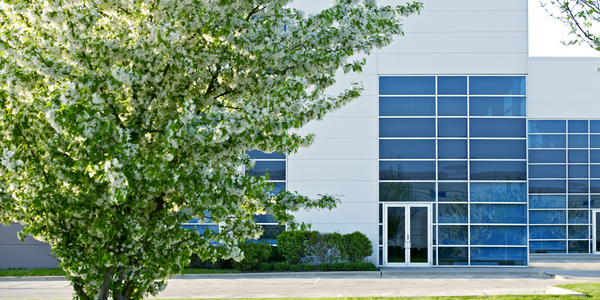技术
- 应用基础设施与中间件 - 数据库管理和存储
- 基础设施即服务 (IaaS) - 云数据库
适用行业
- 水泥
适用功能
- 采购
用例
- 智慧校园
- 时间敏感网络
服务
- 系统集成
关于客户
康奈尔大学是美国最古老、最精英的大学之一。这所常春藤联盟学校成立于 1865 年,其学术声誉始终位居全国前 15 名。它拥有约 21,904 名学生、1,648 名教授,并培养了 54 名诺贝尔奖获得者。该大学于 2004 年和 2011 年实施了电子采购投标系统,在同行中处于领先地位。然而,这些系统用户界面不友好,并且执行常见任务需要太多步骤,因此需要更高效的软件解决方案。
挑战
康奈尔大学是美国最古老、最负盛名的大学之一,其电子采购投标系统面临着挑战。他们在 2004 年和 2011 年实施的软件产品虽然比手动流程有所改进,但用户界面并不友好,并且需要太多步骤来完成常见任务。这导致供应商提交投标时遇到困难,往往需要采购人员的协助。该大学需要一种更高效的软件来满足其独特的业务需求。他们正在寻找一种供应商易于使用、支持密封投标流程并提供供应商资格预审和批准等其他功能的系统。
解决方案
在对电子采购选项进行全面评估后,康奈尔大学选择了最适合其需求的 Bentley 采购软件。该软件由工作人员和选定的供应商进行了测试,他们发现该软件用户友好且高效。新系统的主要功能(例如在线投标提交)使大学能够减少采购过程中的管理时间。该软件的供应商管理门户可通过大学网站链接访问,提供在线供应商注册、发布招标信息,并允许在线提交投标,从而消除了采购过程中的纸张和邮寄成本。该软件还使康奈尔大学能够建立自己的高质量供应商数据库,确保供应商信息保持最新、准确。 Bentley 采购软件平台还提供对采购流程的监督、记录交易、执行最后期限和密封投标,以防止信息过早披露。
运营影响
数量效益

Case Study missing?
Start adding your own!
Register with your work email and create a new case study profile for your business.
相关案例.

Case Study
System 800xA at Indian Cement Plants
Chettinad Cement recognized that further efficiencies could be achieved in its cement manufacturing process. It looked to investing in comprehensive operational and control technologies to manage and derive productivity and energy efficiency gains from the assets on Line 2, their second plant in India.

Case Study
Digital Transformation of Atlanta Grout & Tile: An IoT Case Study
Atlanta Grout & Tile, a Tile, Stone & Grout restoration company based in Woodstock, Georgia, was facing challenges with its traditional business model. Despite steady growth over the years, the company was falling behind the web revolution and missing out on the opportunity to tap into a new consumer base. They were using independent software from different vendors for each of their department information and workforce management. This resulted in a lot of manual work on excel and the need to export/import data between different systems. This not only increased overhead costs but also slowed down their response to clients. The company also had to prepare numerous reports manually and lacked access to customer trends for effective business decision-making.

Case Study
Revolutionizing Construction Equipment Rental: A Case Study on ProsRent and ENO8
ProsRent, a startup that won the 'Best Financial Opportunity' and 'Best Pitch' at CodeLaunch 2016, aimed to revolutionize the way construction professionals source and rent heavy equipment. In the construction industry, project managers and contractors typically rent heavy equipment from supply companies. However, predicting inventory can be challenging, and finding the required equipment at the right time and place can be a hassle. If the preferred vendor doesn't have the required equipment, it results in wasted time and money in searching for it, often leading to higher costs due to non-preferred rates and increased delivery costs if the vendor is located far from the job site. Suppliers, on the other hand, desired access to a wider base of trusted renters that they didn't have to vet themselves and wanted to offer dynamic rental pricing based on demand and availability in their market. ProsRent's challenge was to produce a minimum viable product that was fast and first to market but also strong enough to engender loyalty and repeat business from the target market.

Case Study
AI-based Automation for Commercial Office HVAC: A Verdigris Case Study
Modern buildings are required to run longer hours, support a variety of end uses, and contribute to higher levels of economic productivity, leaving a thin margin for error. However, even the most advanced building and environmental control systems have failed to adequately support facilities and operations management. Buildings are often inefficient and the people using them are underserved. To meet occupant comfort and maintain cost and energy efficiency, a dynamic, AI-assisted approach is needed.

Case Study
Revamping EE's Legacy ERP: A Case Study on BT's Strategic Transformation
EE, even after its merger with BT, was operating its ERP estate on legacy infrastructure, hosted on the premises of a third-party supplier. This outdated system resulted in a volume-based operational model, higher time to market, longer delivery cycles, and unsatisfactory customer experience. BT recognized the need for a strategic transformation of these aging ERP systems and sought a partner who could proactively manage application services. The partner was also expected to handle development requirements associated with application management services, drive accountability, and ownership with a time and target-driven transformation of these services. BT's primary goals were to improve customer experience, reduce cycle time, and measure these improvements with precision.








